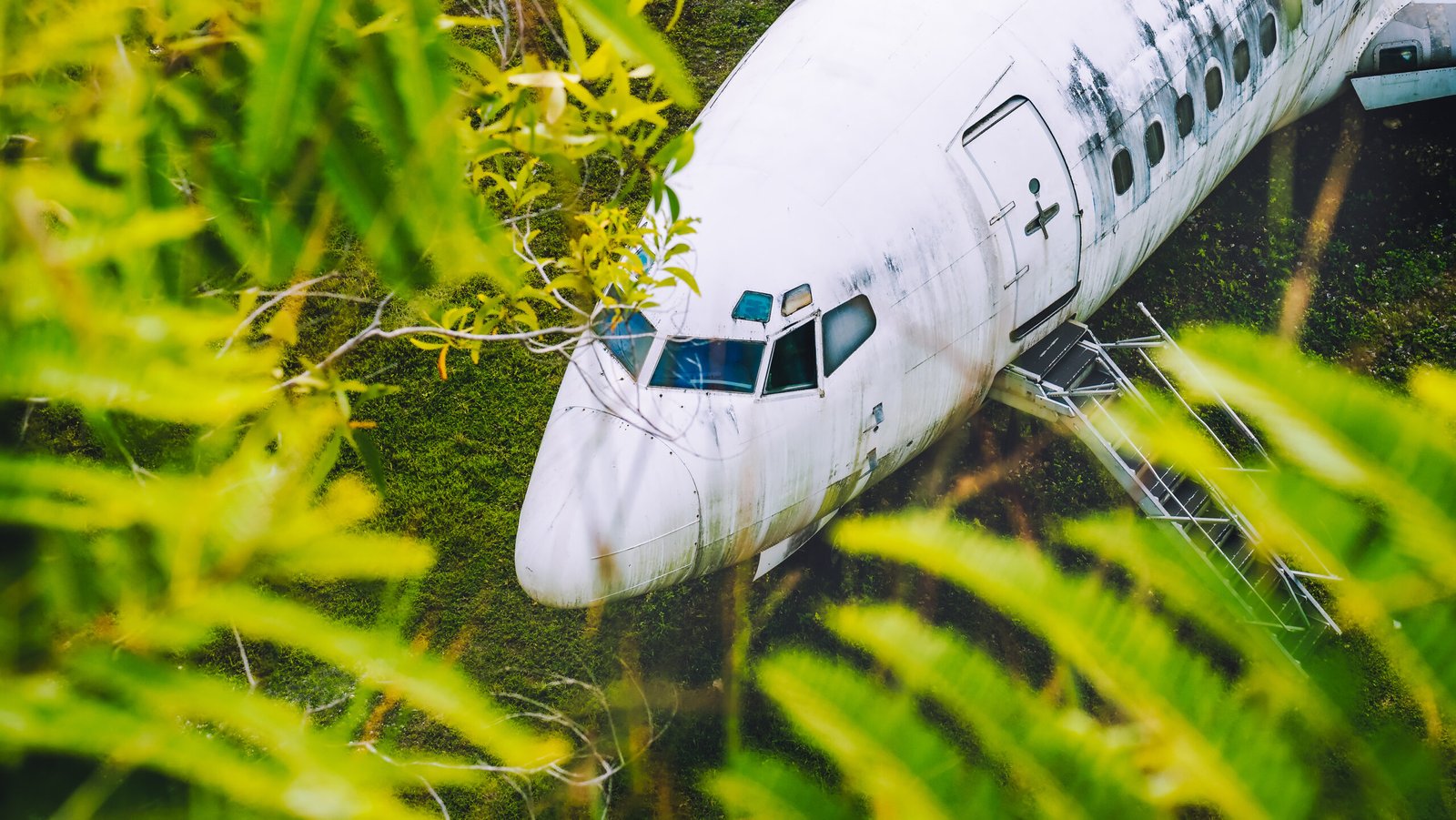Social Media in Aviation
A Bird’s Eye View: The Evolution of Commercial Aviation
The skies have always captivated humanity, and the evolution of commercial aviation has transformed our world in remarkable ways. From the early days of flight to today’s high-tech aircraft, advancements in technology and training have played a pivotal role in shaping the industry.
One area that has seen tremendous growth is aviation technology training. Modern pilots are no longer solely reliant on hands-on experience; they now hone their skills using advanced flight simulators. These sophisticated devices replicate real-life flying conditions, allowing aspiring aviators to practice maneuvers and troubleshoot emergencies without ever leaving the ground. Training programs incorporate various scenarios, from routine take-offs to challenging weather conditions, ensuring pilots are well-prepared for anything that may come their way.
For those looking to delve deeper into aviation knowledge, there’s an abundance of resources available online. Numerous blogs and websites cater to enthusiasts and professionals alike. Websites like AirlineReporter.com and TheAviationist.com offer insights into industry news and trends, while FlightGlobal.com provides comprehensive analysis on global aviation developments. Social media platforms also abound with aviation content; Twitter accounts such as @AviationWeek deliver timely updates, while Instagram is bursting with stunning aerial photography capturing the beauty of flight.
Moreover, online aviation courses have revolutionized how individuals pursue their passion for flying or seek careers in this dynamic field. Ground schools now offer flexible options for students around the globe—be it through interactive modules or live sessions with seasoned instructors. These courses cover essential topics ranging from navigation and meteorology to regulations governing airspace usage. They provide a solid foundation for aspiring pilots who wish to turn their dreams into reality.

In addition to traditional pilot roles, commercial aviation offers a variety of job opportunities within its expansive ecosystem. Whether you aim to be a commercial airline captain or an air traffic controller guiding flights safely through busy airspace, the demand for skilled professionals continues to rise. Resources such as FAA.gov serve as excellent starting points for understanding licensing requirements and career paths available in this field.
As we traverse further into this decade, one cannot overlook the impact of drones on the future of aviation. Once merely a novelty gadget for hobbyists, drones are now essential tools across numerous industries—from agriculture monitoring to disaster response efforts. The FAA is actively involved in regulating these unmanned aircraft systems (UAS), ensuring safety standards are met while promoting innovation within this burgeoning sector.
To stay informed about changes affecting both manned and unmanned flight operations, it’s vital to keep up with official resources like FAA links that provide updates on regulations and new technologies entering the market.
The trajectory of commercial aviation showcases not just technological marvels but also our collective ambition as humans striving for progress. Whether you’re an aspiring pilot mastering your skills through simulators or someone exploring drone technology’s potential impact on our lives, there’s never been a more exciting time to engage with this vibrant industry.
From ground school courses laying down foundational knowledge to blogs offering daily nuggets of wisdom about contemporary issues facing aviation today—the possibilities are endless! So fasten your seatbelts; we’re just getting started on this exhilarating journey through the skies!
From Wright to Flight: A Journey Through Aviation History
Aviation has come a long way since the Wright brothers took their first powered flight in 1903. Today, technology has transformed how we learn, train, and operate within this dynamic field. The evolution of aviation is not just a story of aircraft; it’s also about the tools and resources that have shaped the industry.
One of the most significant advancements in aviation training is the use of flight simulators. These sophisticated devices replicate real-world flying conditions while keeping costs down and safety at the forefront. Simulators allow aspiring pilots to practice takeoffs, landings, and emergency situations without ever leaving the ground. Institutions worldwide are implementing these high-tech solutions into their curricula, making training more accessible and efficient.
For those looking to dive deeper into aviation knowledge or connect with enthusiasts, numerous blogs, websites, and social media platforms cater to all facets of this field. Websites like Airliners.net and FlightAware offer insights into flight tracking and airline operations while forums such as PPRuNe (Professional Pilots Rumour Network) provide a platform for pilots to exchange experiences and advice. Social media channels on platforms like Instagram feature stunning aerial photography alongside accounts dedicated to sharing news updates in aviation. Twitter also serves as an excellent resource for staying informed with breaking news from major airlines or regulatory bodies.

Online aviation courses have gained popularity in recent years, offering flexibility for those seeking to enhance their skills or pivot careers entirely. Ground schools provide foundational knowledge for aspiring pilots, covering essential topics such as navigation and meteorology. Institutions like Embry-Riddle Aeronautical University offer comprehensive online programs tailored for various levels—ranging from private pilot licenses to advanced degrees in aeronautics. With so many options available online, anyone can find a course that suits their schedule and learning style.
The demand for qualified pilots continues to soar globally; thus, job opportunities abound within this field. Airlines are actively seeking skilled individuals who possess both technical expertise and interpersonal abilities to excel in customer service roles as well as command positions in the cockpit. Platforms like PilotCareerCenter.com list job openings while providing guidance on resume-building tailored specifically for aviators.
Additionally, the rise of drones represents another exciting chapter in aviation history. Once limited primarily to military applications, drones are now utilized across various sectors—from agriculture monitoring to aerial photography—and their use is expected only to increase. As regulations evolve under organizations like the FAA (Federal Aviation Administration), individuals interested in drone piloting must stay informed about licensing requirements and safety guidelines through official FAA links such as FAA.gov/uas.
Navigating through this expansive world requires access to reliable resources; luckily today’s tech-savvy society provides ample tools at our fingertips. Whether you’re an aspiring pilot exploring online courses or simply someone fascinated by what lies above us—the sky’s no longer the limit! Embracing these innovations offers endless possibilities not just for career paths but also for hobbyists eager to take part in this captivating journey through time—a journey fueled by human curiosity and technological advancement that traces back over a century ago when two brothers dared dream big!

Navigating the Skies: A Beginner’s Guide to Aviation Terminology
Aviation is a fascinating realm that blends engineering marvels with the thrill of exploration. For newcomers, however, the jargon can feel overwhelmingly complex. Understanding aviation terminology is essential for anyone looking to embark on a journey within this field—be it as a pilot, technician, or enthusiast. So buckle up as we dive into an essential guide designed to help you navigate through the skies of aviation language.
*Aviation and Technology Training: The Foundation of Flight**
At its core, aviation education combines theoretical knowledge with practical training. Many aspiring aviators begin their journey in technology training programs that focus on understanding aircraft systems and operations. Here’s where flight simulators come into play; these incredible tools allow students to experience flying without leaving solid ground. With state-of-the-art technology, simulators replicate real-world conditions—weather changes, emergencies, and more—providing invaluable experience before stepping into an actual cockpit.

*Online Resources: Blogs and Websites to Fuel Your Passion**
For those eager to learn more about aviation beyond traditional classrooms, countless online resources are available at your fingertips:
1. **AOPA (Aircraft Owners and Pilots Association)**: A wealth of information for pilots including articles about safety and regulatory updates.
2. **Flying Magazine**: Offers insights from experienced aviators along with product reviews.
3. **Airliners.net**: A community-driven site featuring photos, forums, and discussions about commercial aviation.
4. **NASA’s Aeronautics Research Institute**: Provides detailed research papers and updates on advancements in flight technology.
5. **Social Media Groups**: Look for Facebook groups like “Pilot Ground School” or Instagram accounts such as @aviationdaily for visual content that inspires.
These platforms serve as excellent starting points for deepening your understanding of aviation while connecting with fellow enthusiasts.
*Courses and Ground Schools: Charting Your Course**
If you’re serious about pursuing a career in aviation or simply want to enhance your knowledge base, consider enrolling in online courses or ground schools. Institutions such as Embry-Riddle Aeronautical University offer comprehensive programs covering everything from basic aerodynamics to advanced navigation techniques—often entirely online!

Additionally, numerous organizations provide free or low-cost resources aimed at novice pilots. Websites like FAA Safety Team provide safety seminars and educational materials tailored specifically for pilots in training.
*Career Prospects: Taking Flight as a Pilot**
Once you’ve grasped the foundational terminology and completed necessary training programs, you may find yourself eyeing a career in aviation. Pilots have various career paths available—from commercial airlines to cargo transport or even agricultural flying! Each specialty requires different certifications (like an ATP license or type ratings), but all share one common requirement—a passion for flight.
*The Rise of Drones: New Horizons in Aviation**
In recent years, drones have revolutionized how we think about air travel and logistics. These unmanned aerial vehicles (UAVs) are not only used for recreational purposes but also serve critical roles in industries such as agriculture, photography, search-and-rescue missions, and delivery services.
As interest in drones surges, it’s important to stay informed about regulations set by the FAA (Federal Aviation Administration). Their website is filled with guidelines that govern drone operation ensuring safety above all else.
In conclusion, whether you’re dreaming of soaring through the clouds as a pilot or simply wish to understand the intricacies of flight better—familiarizing yourself with aviation terminology opens doors wide open! With an array of educational resources available online combined with practical experiences through simulators or ground schools—the sky isn’t just the limit; it’s just the beginning!
Behind the Cockpit: A Day in the Life of a Commercial Pilot
The allure of flight captivates many, but few truly understand what it takes to become a commercial pilot. Behind the glamour of soaring through clouds and landing at exotic destinations lies an intricate world of training, technology, and constant learning. Buckle up as we take you on an enlightening journey through a day in the life of these modern aviators.
The journey begins long before a pilot steps into the cockpit. Aviation training has evolved dramatically, incorporating cutting-edge technology that enhances learning and safety. One crucial component is flight simulators. These high-tech devices replicate real flying conditions with astonishing accuracy, allowing aspiring pilots to perfect their skills without leaving the ground. From handling emergency situations to navigating complex airspace, simulators provide invaluable experience that prepares pilots for real-life challenges.
For those eager to dive deeper into aviation knowledge, numerous resources exist online to enhance understanding and expertise. A plethora of aviation blogs and websites offer insights from seasoned professionals and enthusiasts alike. Some noteworthy mentions include “Airline Reporter,” which covers industry news and trends; “Flying Magazine,” known for its comprehensive articles on aircraft and techniques; and “PILOTWORKS,” focusing on pilot training tips. Additionally, social media platforms like Instagram and Twitter are teeming with aviation influencers sharing snippets of their experiences, tools of the trade, and breathtaking aerial photography.
Education doesn’t stop once one earns their wings; ongoing learning is integral to maintaining proficiency in this dynamic field. Online aviation courses have gained popularity due to their flexibility and accessibility. Platforms like Coursera or Udemy offer a range of subjects from meteorology to aircraft systems management—all tailored for aspiring aviators or even seasoned pilots seeking to broaden their horizons. Ground schools also play a critical role in preparing students for FAA exams while providing essential theoretical knowledge about aviation regulations, navigation systems, and aerodynamics.
As they gain experience through various channels—training flights in small planes or shadowing veteran pilots—many individuals wonder about job prospects in this competitive landscape. The demand for qualified pilots has surged in recent years due to rising air travel rates globally. Airlines frequently advertise openings on their websites while organizations such as Avjobs.com specialize in aggregating pilot job listings across various sectors. Opportunities abound not just within commercial airlines but also through cargo services, charter companies, or even corporate jet operations.
In recent times, drones have entered the conversation as an exciting development within aviation technology. While they primarily serve recreational purposes now, drones are steadily being integrated into industries such as agriculture, logistics, surveillance, and more! This expansion opens new avenues for pilots trained specifically in unmanned aerial vehicle (UAV) operation—a fascinating intersection between traditional piloting skills and modern technological advancements.
For those intrigued by regulatory standards governing aviation practices in the United States—and indeed worldwide—the Federal Aviation Administration (FAA) provides a wealth of resources online: everything from licensing requirements to safety guidelines can be found on their official website (faa.gov). Staying updated with these regulations ensures that pilots maintain compliance while fostering safer skies for everyone involved.
As we conclude our peek behind the cockpit door into a commercial pilot’s life—filled with rigorous training sessions using state-of-the-art simulators; educational pursuits via online courses; bustling career opportunities; revolutionary drone technology; alongside vital FAA resources—we hope you gain an appreciation for these skilled professionals who turn dreams of flight into reality each day!
Green Skies Ahead: How Sustainable Practices Are Changing Air Travel
As the world grapples with climate change, the aviation industry is rising to the challenge by embracing sustainable practices that are reshaping air travel. With advancements in technology and training, the skies are set to become greener than ever.
One of the most significant developments in aviation is the integration of advanced technology into pilot training. Flight simulators have revolutionized how aspiring pilots learn. These sophisticated systems provide realistic environments that mimic various flying conditions without the environmental impact of traditional flight training. Pilots can practice emergency procedures or complex maneuvers in a controlled setting, ensuring they are well-prepared for real-world scenarios while minimizing their carbon footprint.
For those keen on keeping up with industry trends, there’s a wealth of information available online. Numerous aviation blogs and websites offer insights into sustainability efforts within the sector. Sites like AvWeb and Flying Magazine provide regular updates on innovations, regulatory changes, and environmental initiatives. Social media platforms such as LinkedIn and Twitter feature groups dedicated to sustainable aviation discussions, allowing enthusiasts to connect and share ideas about reducing emissions and enhancing efficiency.

Moreover, an array of online courses is now accessible for individuals interested in pursuing careers in aviation or expanding their knowledge base. Ground schools offer foundational education for both aspiring pilots and those working behind the scenes at airports or airlines. Platforms like Coursera and Udemy host comprehensive courses covering everything from aerodynamics to air traffic control fundamentals. Such educational resources play a crucial role in preparing future professionals who will be at the forefront of sustainability efforts.
The demand for skilled pilots continues to rise as air travel rebounds post-pandemic; however, prospective aviators must also be equipped with knowledge about green technologies. Airlines are increasingly looking for candidates who understand eco-friendly practices—be it operating fuel-efficient aircraft or employing strategies that reduce waste during flights.
In addition to traditional piloting roles, new opportunities are emerging within the realm of drones—a sector poised to transform logistics and delivery services while minimizing environmental impact. Drones can efficiently transport goods over short distances without contributing significantly to carbon emissions associated with conventional transportation methods. As regulations evolve, so too do job prospects in this exciting field.
For anyone involved in aviation or simply interested in its trajectory toward sustainability, staying updated on FAA regulations is imperative. The Federal Aviation Administration (FAA) has been actively promoting initiatives aimed at reducing greenhouse gas emissions through innovative technologies like sustainable aviation fuels (SAF). Their website provides valuable resources detailing guidelines for implementing these practices across various sectors of aviation.
In conclusion, as we navigate toward greener skies, it’s clear that innovation plays a pivotal role in shaping the future of air travel. From enhanced pilot training through simulators to embracing cutting-edge drone technology and staying informed via diverse online platforms—every aspect contributes towards making our skies cleaner and more sustainable than ever before. Embracing these changes not only benefits our planet but also opens up exciting avenues for professionals passionate about shaping an eco-conscious future in aviation!
Jet Setters: Exploring the Benefits of Private Aviation
In an era where time is increasingly precious, private aviation stands out as a beacon of efficiency and luxury. The convenience of flying on your schedule, avoiding crowded terminals, and experiencing personalized service makes it a preferred choice for many business executives and leisure travelers alike. But beyond the plush cabins and quick getaways lies a fascinating world powered by cutting-edge technology and training innovations that are transforming the aviation landscape.
*Aviation and Technology Training**
At the heart of this transformation is a robust emphasis on aviation technology training, which has become vital for aspiring pilots and industry professionals. Modern flight simulators play an essential role in preparing pilots for real-world scenarios without leaving the ground. These sophisticated devices replicate various flight conditions—from adverse weather to emergencies—allowing trainees to hone their skills safely. This immersive experience not only boosts confidence but also significantly reduces risks associated with piloting aircraft.
*Discovering Online Resources**
For those looking to dive deeper into the world of aviation, numerous blogs, websites, and social media platforms are available to quench your curiosity. Some standout blogs include:
1. **Fighter Sweep** – A blog focused on military aviation.
2. **Airline Reporter** – Offers insights into commercial airlines.
3. **The Points Guy** – Focuses on travel tips that often intersect with private flying benefits.
Websites like Aviation Week provide industry news, while social media platforms like Instagram and Twitter have vibrant communities sharing stunning aerial photography or discussing technological advancements in flight.
If you prefer video content, YouTube channels such as “Mentour Pilot” or “Captain Joe” demystify complex topics through engaging visuals—perfect for visual learners.
*Online Aviation Courses and Ground Schools**
The rise of online education has revolutionized how aspiring pilots can acquire necessary certifications. Numerous institutions offer online courses tailored specifically for ground school training, covering everything from aerodynamics to navigation techniques. Websites like Sporty’s Academy or Pilot Institute provide comprehensive curricula that students can access at their convenience.

In addition to pilot training, these programs often connect students with job opportunities in the aviation sector upon completion—a significant advantage in a competitive field where connections matter just as much as qualifications.
*The Rising Influence of Drones**
Another exciting facet of modern aviation is the burgeoning drone industry. With applications ranging from photography to delivery services, drones have carved out their niche in both commercial sectors and personal usage. Understanding FAA regulations is critical here; resources such as the official FAA website offer guidance on licensing requirements and operational rules for drone enthusiasts.
Drones also pave new paths for jobs within aviation—think drone operators or maintenance technicians—as businesses increasingly explore innovative uses for UAVs (unmanned aerial vehicles).
*Connecting with Industry Resources**
To further enhance your knowledge about private aviation and its myriad fields, consider bookmarking essential FAA links that provide updates on regulations, safety protocols, and new initiatives shaping air travel today.
In conclusion, whether you’re an ambitious pilot-in-training or simply someone enamored by all things airborne, private aviation offers more than just luxurious escapes—it opens doors to rich educational resources and career opportunities while embracing cutting-edge technologies like never before. So why not strap in? The sky isn’t just a limit; it’s an invitation waiting to be explored!
Sky High Careers: Exploring Job Opportunities in the Aviation Sector
The aviation industry has long captivated dreamers and doers alike, offering a plethora of career paths that soar high above traditional jobs. With advancements in technology, the landscape of aviation is evolving rapidly, providing exciting opportunities for aspiring professionals. Whether you’re drawn to the cockpit as a pilot or prefer working behind the scenes, there’s a place for you in this dynamic field.
*Aviation and Technology Training: The Foundation of Your Career**
As with any profession, education is paramount in aviation. Various training programs integrate cutting-edge technology to prepare individuals for their future roles. Flight simulators have revolutionized pilot training by allowing students to experience real-world flying scenarios without leaving the ground. These high-tech devices replicate cockpit environments and flight conditions, ensuring pilots are well-prepared for any situation they may encounter.
Beyond piloting, many positions in aviation require specialized technical training. Mechanics and engineers must be proficient with modern aircraft systems and maintenance protocols. Therefore, enrolling in accredited programs that focus on both theoretical knowledge and practical application is essential.
*Online Aviation Courses and Ground Schools: Bridging Knowledge Gaps**
With the rise of online education platforms, obtaining an aviation-related certification has never been more accessible. Numerous online courses cover everything from basic flight principles to advanced aerodynamics. Ground schools offer comprehensive training that prepares pilots for their written exams while also enhancing their understanding of air traffic control procedures and regulations.
For those interested in becoming commercial pilots or private aviators, many institutions provide tailored courses that address specific needs within the industry. This flexibility allows you to learn at your own pace while managing other life commitments.
*Drones: A New Frontier**
In recent years, drones have emerged as a game-changer within aviation. They are not just toys; these unmanned aerial vehicles (UAVs) are being used across various sectors such as agriculture, filmmaking, logistics, and surveillance. This burgeoning field has created numerous job opportunities ranging from drone operators to regulatory specialists who ensure compliance with FAA guidelines.
As drone technology continues to evolve, so do career prospects related to it. Pilots looking for innovative avenues can explore roles within companies developing drone delivery services or even start their own UAV-focused enterprises.

*Connecting Through Online Communities**
Staying updated on industry trends is crucial for anyone serious about pursuing an aviation career. To help guide your research journey, here’s a list of valuable resources:
**Aviation Blogs:** Websites like *AirlineReporter.com* and *FlyingMag.com* offer insights into current events and innovations.
**Social Media Groups:** Platforms such as Facebook host numerous groups dedicated to aspiring pilots or enthusiasts sharing experiences.
**Professional Associations:** Organizations like the Aircraft Owners & Pilots Association (AOPA) provide forums where members can network and exchange ideas.
Additionally, following hashtags such as #AviationJobs or #DronePilot on Twitter can help you discover real-time discussions around job openings or emerging technologies.
*FAA Resources: Navigating Regulations**
For those considering careers involving piloting or drone operations, familiarity with Federal Aviation Administration (FAA) regulations is vital. Their official website offers extensive resources including guides on licensing requirements for pilots and essential information regarding drone operation standards.
In conclusion, if you’re aiming sky-high when it comes to your career aspirations in aviation, rest assured there are myriad pathways available—each filled with excitement and potential growth! Whether through rigorous training programs or innovative technologies like drones, your journey in this field promises adventure at every turn!
Soaring High: The Future of Aviation Technology
Aviation has always been a field that captures the imagination, and as technology continues to evolve, its future is looking more promising than ever. From online courses that make pilot training accessible to everyone, to the rapidly advancing world of drones, there’s never been a better time to be involved in aviation. Let’s explore the emerging trends and opportunities shaping the sky above us.
*Online Aviation Courses and Ground Schools**
The digital age has revolutionized how we learn, and aviation education is no exception. Online aviation courses have surged in popularity, allowing aspiring pilots to study at their own pace from anywhere in the world. No longer do students need to commute long distances for ground school; they can access comprehensive curricula with interactive modules covering everything from aerodynamics to regulations.

Institutions such as Pilot Institute and Embry-Riddle Aeronautical University offer certification programs tailored for both novices and experienced aviators seeking advanced skills. With engaging video content and quizzes that reinforce learning, these platforms provide flexible options for busy learners aiming to earn their wings without sacrificing their day-to-day commitments.
*Career Opportunities in Aviation**
As technology advances, new career paths are opening up within the aviation industry. Pilots remain at the forefront of this evolution. According to projections from the Federal Aviation Administration (FAA), there will be a substantial demand for pilots over the coming years due to retirements and increasing air travel. This surge opens doors not only for traditional airline pilots but also for roles in cargo transport, agricultural aviation, and charter services.
Moreover, as airlines invest heavily in innovative technologies—such as sustainable fuels or electric aircraft—the landscape of pilot jobs is broadening even further. Embracing continuous education through online resources ensures that today’s pilots stay competitive while adapting to these exciting changes.

*Drones: The New Frontier**
While traditional aircraft are crucial for transportation, drones represent an exhilarating frontier within aviation technology. Drones have evolved far beyond hobbyist toys; they are now essential tools across numerous industries including agriculture, delivery services, surveying, and emergency response.
With regulations evolving alongside technological advancements, drone operators must stay informed about FAA guidelines governing commercial operations. The FAA provides extensive resources on drone use including safety protocols and registration requirements—information vital for anyone venturing into this burgeoning sector.
*Aviation Blogs & Social Media Resources**
If you’re passionate about all things aviation or simply wish to stay updated with industry trends, numerous blogs and websites serve as excellent resources:
1. **Airline Reporter** – Offers insights into airline industry news with a focus on passenger experiences.
2. **Flying Magazine** – Covers pilot stories alongside tips on flying techniques.
3. **The Air Current** – Provides deep dives into aerospace technology developments.
4. **Plane Spotters Blog** – Engages readers with photography and information on various aircraft around the globe.
Social media platforms also thrive with vibrant aviation communities where enthusiasts share knowledge:
**Twitter:** Follow hashtags like #AvGeek or accounts like @FlyingMag
**Instagram:** Discover stunning aerial photography by following accounts such as @aviationdaily
**YouTube:** Channels like “Pilot Training” offer educational videos ranging from flight tips to aircraft reviews.
As we gaze towards an increasingly innovative future filled with possibilities in aviation technology—whether it’s through obtaining a pilot’s license via online courses or exploring drone applications—the sky isn’t just a limit; it’s an open gateway brimming with opportunities waiting to be seized!
Flight Paths: Exploring the Evolution of Aircraft Design
The world of aviation has always been a fascinating blend of innovation and tradition, continuously evolving since the Wright brothers took their first flight in 1903. While aircraft design has transformed dramatically over the decades, so too has the way aspiring pilots and aviation enthusiasts engage with this captivating field. Today, online aviation courses and ground schools offer unprecedented access to knowledge, while vibrant communities thrive across the internet.
With the advent of technology, pursuing a career in aviation has never been more accessible. Online aviation courses cater to a diverse audience—from those looking to become commercial pilots to individuals seeking to understand more about aerodynamics or air traffic control. These courses often provide flexibility for busy schedules, allowing students to learn at their own pace from anywhere in the world. Ground schools complement these online offerings by providing essential hands-on training and classroom instruction that covers everything from navigation and meteorology to safety protocols and regulations.

For many aspiring aviators, understanding potential job opportunities is crucial. Becoming a pilot is just one pathway; opportunities abound in areas such as aircraft maintenance, flight dispatching, or even air traffic control. The journey often begins with obtaining appropriate licenses through rigorous training programs—often facilitated by ground schools or specialized institutions—before stepping into roles like First Officer or Captain on commercial flights.
However, learning doesn’t stop after formal education. Aviation forums and communities have emerged as vital resources for both novice pilots and seasoned professionals alike. Websites like AvGeekery and PPRuNe (Professional Pilots Rumour Network) allow users to share experiences, seek advice, and discuss industry trends. Engaging with these platforms can greatly enrich one’s understanding of aviation while providing valuable networking opportunities.
In our digital age, social media also plays an integral role in connecting individuals passionate about aviation. Platforms such as Instagram feature stunning visuals that showcase aircraft designs from around the globe—whether it be vintage models or cutting-edge jets—and provide insight into everyday life within the cockpit through pilots’ personal accounts. Facebook groups dedicated to various aspects of aviation create collaborative spaces for discussions about techniques, gear recommendations, or even local flying clubs.
For readers interested in diving deeper into this realm from home or on-the-go, several blogs and websites serve as treasure troves of information:
1. **AirlineReporter** – Delivers news on airline operations alongside engaging travel stories.
2. **Flying Magazine** – Offers articles on flying tips, pilot health advice, product reviews, and more.
3. **The Aviation Herald** – Provides detailed reports on aviation incidents worldwide.
4. **AOPA (Aircraft Owners & Pilots Association)** – A resourceful site offering advocacy for general aviation pilots along with educational content.
5. **FlightGlobal** – Covers comprehensive news regarding commercial airlines and defense industries.
Additionally, YouTube channels such as “Captain Joe” deliver entertaining yet informative content that demystifies flight operations while sharing personal anecdotes from real-life pilots.
As we look ahead at future innovations—including electric planes made possible by advancements in battery technology—the importance of education remains clear; both formal training through ground schools and self-directed learning via online resources will continue shaping the next generation of aviators.
So whether you’re dreaming of soaring through clouds or simply curious about what goes on behind cockpit doors—embrace this ever-evolving field! Explore online courses; join forums; connect with fellow enthusiasts! Your adventure awaits among the skies above!
From Pilot to Passenger: Understanding the Evolution of Aviation Safety
Aviation safety has come a long way since the early days of flight. As technology advances, so does our understanding of how to keep both pilots and passengers safe in the skies. Today, aspiring aviators can benefit from a wealth of resources, including online aviation courses and ground schools that equip them with vital knowledge and skills. Let’s dive deeper into these options and explore how they contribute to the evolution of aviation safety.

Online aviation courses have revolutionized pilot training by making education more accessible than ever. Platforms like Coursera, Udemy, and specialized aviation sites offer programs covering everything from aerodynamics to navigation systems. These courses are designed for busy individuals who may not be able to attend traditional classroom sessions. By providing flexibility, learners can study at their own pace while honing essential piloting skills.
Ground schools play an equally crucial role in preparing pilots for the skies. Typically held in-person or through hybrid models, these schools provide a structured environment where students learn about aircraft systems, weather patterns, and regulations set forth by organizations like the FAA (Federal Aviation Administration). Ground school is particularly significant because it lays the foundation for safe flying practices; it teaches students about risk management—how to assess potential hazards before they lead to incidents.
As you delve deeper into your journey towards becoming a pilot, connecting with others in the field can be incredibly beneficial. Aviation forums and communities serve as invaluable resources for both novice and experienced pilots alike. Websites like PPRuNe (Professional Pilots Rumour Network) or AvGeek forums allow users to ask questions, share experiences, and exchange tips on various aspects of flying—whether it’s dealing with air traffic control or understanding complex regulations.
Moreover, engaging with fellow enthusiasts fosters camaraderie within the aviation community. Online platforms such as Reddit’s r/flying or Facebook groups dedicated to specific aircraft types offer real-time discussions about trends in aviation safety procedures or updates on new technologies. Such interactions often lead to insights that could significantly enhance one’s knowledge base while emphasizing a culture of learning among peers.
In addition to forums, several blogs and websites cater specifically to those interested in all things aviation-related. For instance:
1. **AirlineReporter** – Focused on airline news and travel experiences.
2. **FlightGlobal** – Offers extensive coverage on industry happenings.
3. **The Flying Magazine** – A staple for general aviation enthusiasts.
4. **AOPA (Aircraft Owners and Pilots Association)** – Provides resources for pilots at all levels.
Don’t overlook social media either! Twitter accounts like @FltOps (@FlightOperations) provide timely updates about operational changes while Instagram profiles such as @pilotlife showcase breathtaking views from cockpits around the world.
As we continue evolving our understanding of aviation safety—from innovative training methodologies in ground schools to thriving online communities—the importance of shared knowledge cannot be understated. The tools available today empower aspiring pilots not just with theoretical insights but also foster connections that enhance practical experiences.
Ultimately, whether you’re navigating through an online course or exchanging stories on an aviation forum, one thing remains clear: collective learning elevates our commitment towards ensuring safer skies for everyone—transforming every passenger journey into a testament of progress achieved through collaboration and innovation in this remarkable field called aviation!








